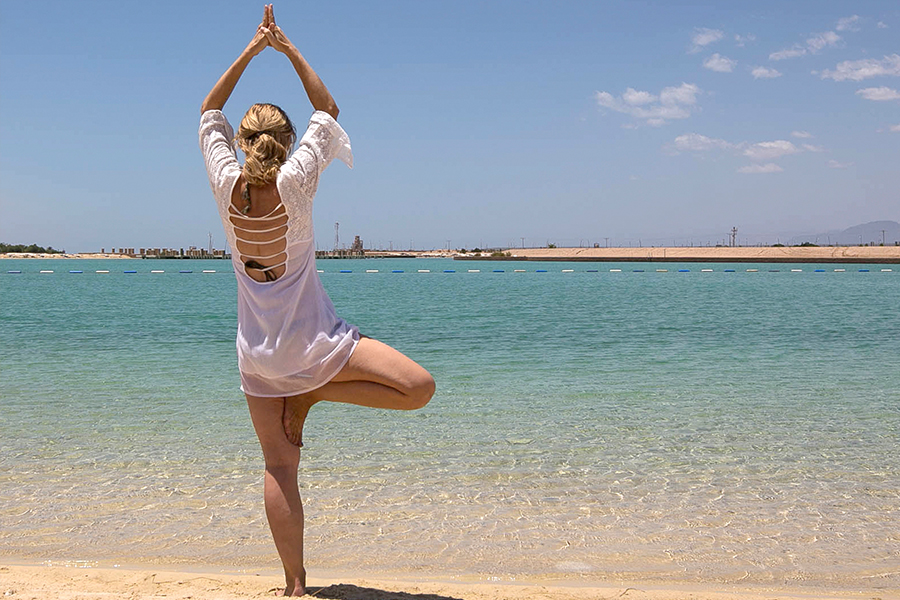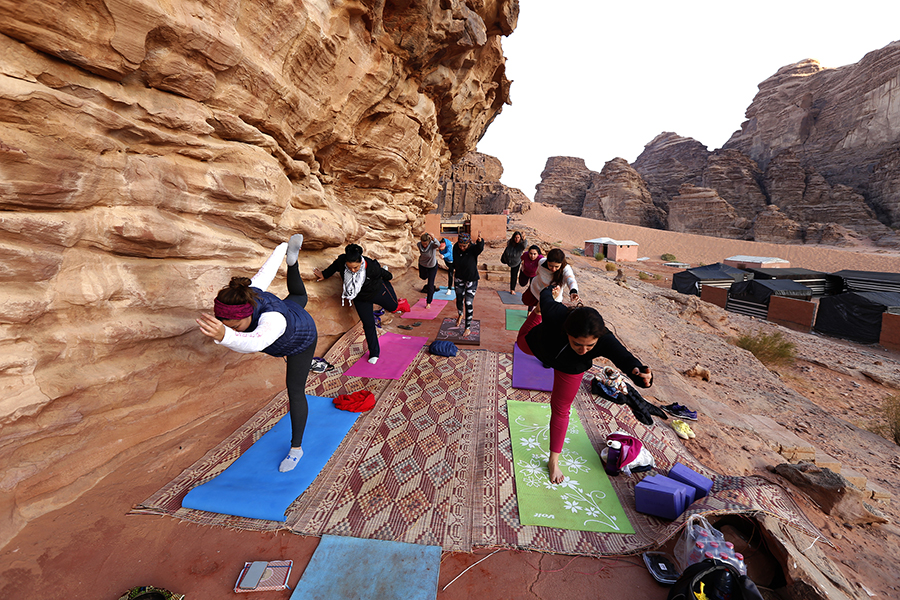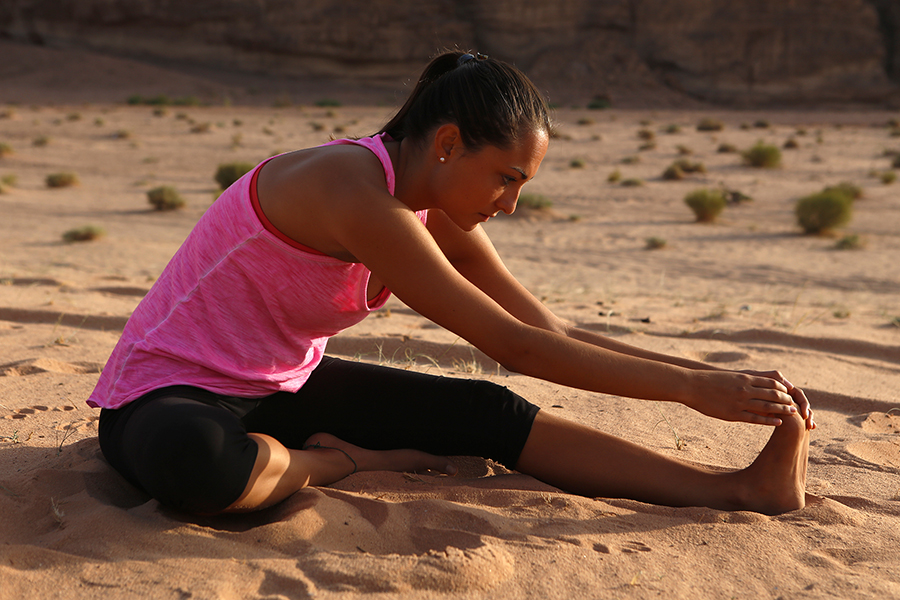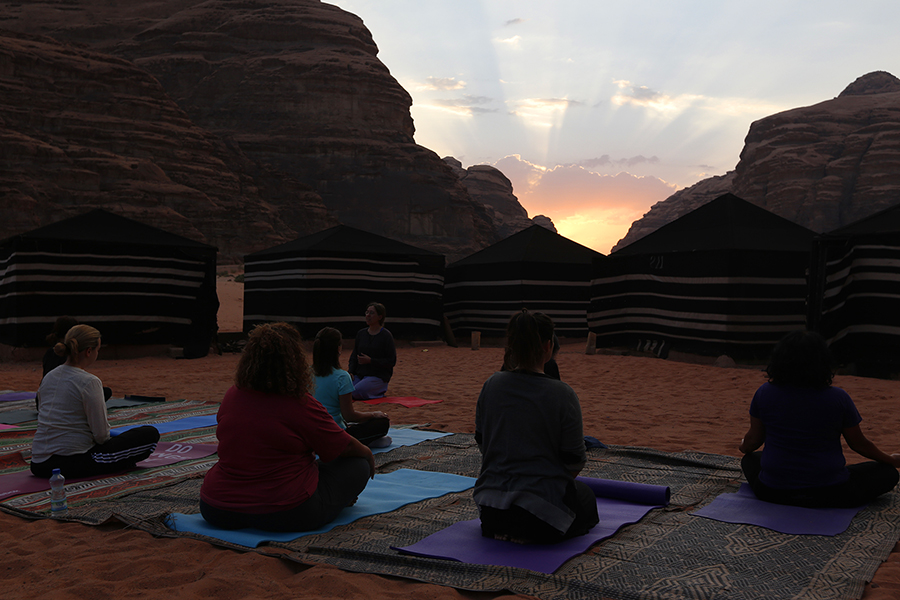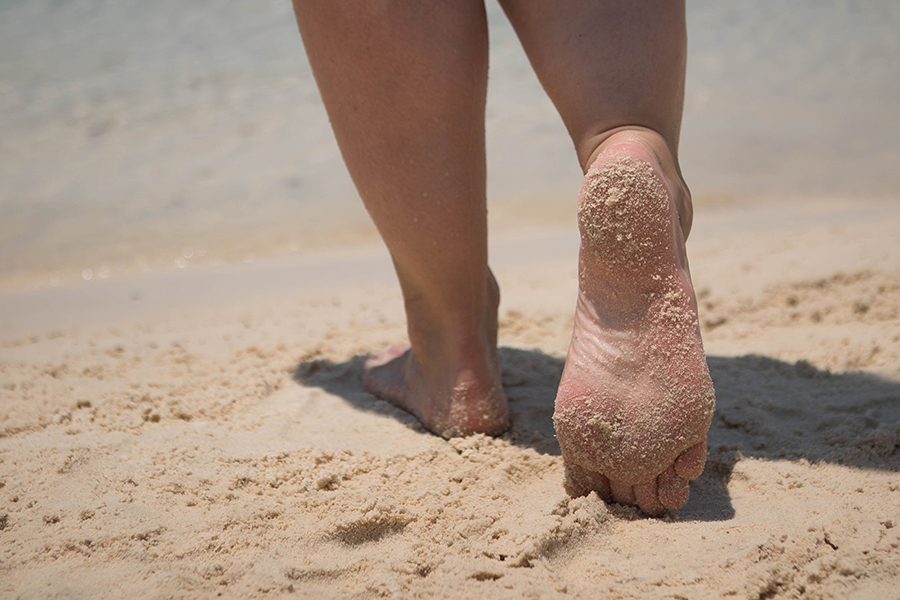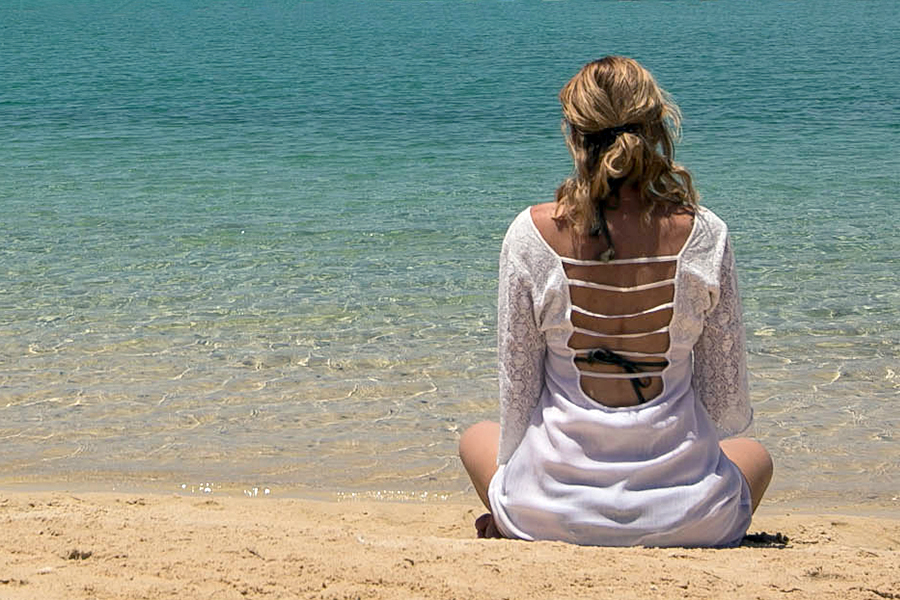Yoga and meditation: strength, balance and relaxation for body and mind
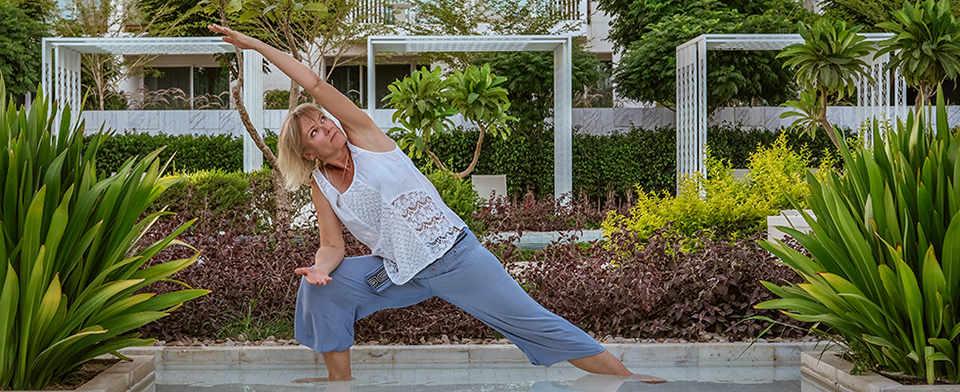
If you experience stress and have tensions and feel under the weather, yoga, meditation and breathing exercises can help you find more balance and relaxation in your private life as well as in your work.
But these practices are definitely also something for you if you are already (reasonably) fit and healthy; to maintain your level of physical fitness and mental balance, and to improve and develop them a little more each time.
Yoga, meditation and breathing exercises go beyond the exercises you do on your mat: It can also help you (re)discover what your priorities, challenges, limitations and possibilities are.
Yoga for mental and physical health
In our modern life the balance between body and mind is often disrupted. This can be due to a variety of reasons.
By practicing yoga you can restore this balance: It makes body and mind active, stronger and flexible. You learn (again) to listen carefully to your own body. You observe your body and your mind.
Many of my students initially start with yoga to relax. That’s how I started almost 30 years ago. And just like my students now, I soon discovered that yoga has so much more to offer. Yoga goes beyond moving, breathing and meditating.
Yoga is a great way to stretch, build muscle strength and endurance, improve flexibility, build balance, optimize organ function, achieve long-term wellness, access our inner intelligence, relax, and yes, thus improving the overall quality of our lives.
Reasons to do yoga could be that you:
- Want to learn to relax yourself better
- Wish to attain optimal physical, mental and emotional health and well-being
- Are advised by your physician or physical therapist to practice yoga
- Want to experience a deeper connection to yourself and to the world that surrounds you
- Want to be more aware of your body
- Want more control of your body
- Want to improve your sense of balance
- want to decrease feelings of stress, fear and anxiety
- You do not breathe properly and want to do that better
- Want to be more flexible
- Want to develop your spirituality
- Would like time to yourself
- Because it’s fun!
Yoga is not all being silence and serious. We enjoy, laugh, share stories, and we create a nice and safe environment in which everyone can be themselves.
Type of yoga
The base of the classes lies in Hatha yoga, supplemented by other styles such as vinyasa, ashtanga and yin-yoga.
My classes are for individuals of all ages and all levels of experience and fitness.
Whether this is your first yogic experience or you’ve been practicing for decades, whether you have physical limitations or not, my approach is to customize the class to your needs and abilities, or those of a group.
The exercises can vary from very vigorous to very gentle.
Private lessons and small groups can also delve deeper into everyone’s individual process.
I guide you in a way that is positive, motivating, attainable and enjoyable.
During classes I often implement various breathing techniques and meditations.
Special classes that I also teach are senior yoga, which often (partly) consists of Chair Yoga.
Breathing exercises and techniques
Breathing exercises are indispensable elements in a yoga class.
With every movement and asana (yoga pose) there is attention for the correct breathing.
In addition, there are many different specific breathing exercises that can be added to a class.
Breathing exercises are also called pranayama.
This is a Sanskrit word, which can be translated as ‘control of breath’. Prana means breath or life force and ‘ayama’ control.
Some forms of pranayama are:
-Kapalabhati (fire breathing)
-Ujjayi pranayama (ocean breathing)
-Dirga pranama (‘3-part breathing’)
-Nadi Sodhana (Alternate Nostril Breathing)
Breathing exercises will help to use your full lung capacity and will improve your breathing in daily life as well.
Through movement, breathing and relaxation exercises you become more aware of yourself and you can release stress more and completely relax your body and mind.
Meditation styles for relaxation and awareness
Meditation is so much more than getting relaxed at the moment you sit quietly. Relaxation is more a result of your practice. By regular practice you will notice the benefits of meditation in your daily life, such as an increase of creativity and focus, improvement of mood and reducing of stress. And you can get the feeling of equanimity more.
When you are meditating, you may feel wonderfully calm after just a few minutes. Other times, it could be very challenging and difficult to focus and your mind is busy. All kind of emotions may arise. Know that all these situations and sensations are okay. There is no right or wrong in meditation.
Know that you don’t have to sit on a pillow or lie on a yoga mat to practice meditating. You can also do this during a walk, for example.
There are many kind of meditations in the world. I practice and teach mainly in below styles:
Insight, mindfulness meditation
The more modern insight meditation, or mindfulness meditation stems from the traditional vipassana.
Vipassana meditation is one of India’s most ancient techniques of meditation and it is the kind of style the Buddha used, to reach enlightenment. The somewhat modern insight and mindfulness meditation also focuses on awareness, attentiveness, acceptance and insight, but without the ancient teachings of the eightfold path and the ultimate goal of achieving nirvana.
Mindfulness meditation and insight meditation can be done standing, sitting, walking and laying down.
More information and a short summary about difference between vipassana, insight meditation and mindfulness can be found on this page
Body scan and Savasana
There are different types of body scans and the length can differ per time.
In general, you lie down and are guided to let go and relax every part of your body, one by one.
A body scan often is performed at the beginning of Savasana but can also be done separately and in sitting position.
Savanasa is a yoga pose, often performed at the end of a class.
In these blogs you can read more about how you do savasana and the benefits of savanasa
Metta meditation
Metta comes from the Pali, a language closely related to Sanskrit, and can be translated as loving kindness. It is a guided meditation and shorter and longer versions are possible, which can vary from like 10 minutes to an hour. The goal is to cultivate kindness to all living beings, including yourself.
Gassho meditation
This is relatively short meditation with its origin from the reiki tradition. Included is to speak out, internally or aloud, the 5 basic principles of the practice of Reiki, that can give you guidance ‘just for today’
Chakra meditations
‘Chakra’ is a Sanskrit word and can be translated as ‘wheel’. They are the energy centers of our body and are located in those places where are the most important nerve nodes. Each chakra corresponds to an area in your body, glands and emotions. And each have their own color and mantra (sound).
There are different types of meditations, focusing on all chakra or one specific.
My yoga classes and all meditations are free from any religion, although the origin may be in Hinduism or Buddhism. They are for individuals of all ages and all levels of experience.
Wonderful yoga classes with clear step by step instructions
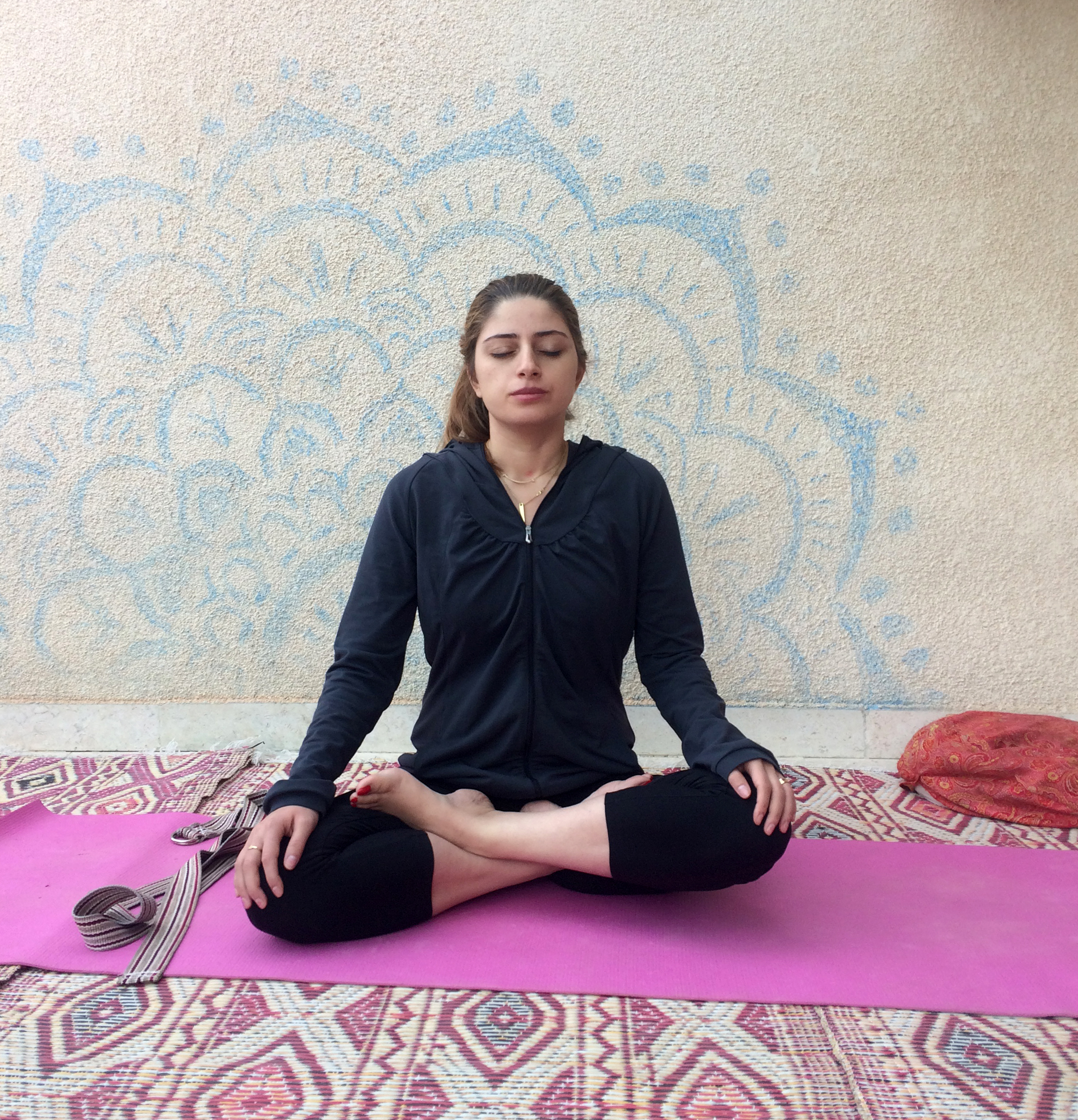
Yoga and meditation classes for companies
A yoga class can be a one-off during an event, for example, or weekly recurring activity.
Depending on the wishes of your company, emphasis can be placed on a more active form, or on the contrary very calm yoga, breathing exercises or meditation
Duration, location and lesson content can be discussed. Price is depending on the package
Classes for individuals and small groups
I mainly provide private lessons for individuals and small groups. Lessons can take place in person as well as online.
Prices for yoga and meditation classes in person and online
For prices and packages for private classes, kindly have a look at my page prices and locations
I currently provide regular group classes exclusively in collaboration with centers or teachers. Prices depend on their rates.
Location for yoga and meditation: on location and online
Classes are all by appointment.
They are possible at your home, at your company or at another desired location.
As I currently work as a nomad teacher, the locations vary between the Netherlands, Southern Europe to Jordan.
Online classes are also for individuals, small groups and companies.
Check out my current and upcoming locations.
If you are looking for a (temporary) teacher, substitute teacher or are interested in a collaborative project, please contact me.
I look forward to special, inspiring meetings and collaborations.
What to wear and bring to the class
- Comfortable clothing in which you can sit easily with meditation and move easily during yoga.
- Water if desired
- Yoga mat or reserve a mat in advance.
- Meditation pillow or meditation stool if you have your own
Very complete, versatile and joyfull yoga and meditation classes
Yoga and meditation retreats in Europe and Jordan
In collaboration with companies, teachers and / or therapists I guide retreats in various countries.
This can be a day retreat, a theme weekend or a holiday week.
The content and intensity differs per retreat. Such as a meditation silence day, a yoga and mindfulness weekend or a wellness week with a combination of yoga, meditation, massage treatments and art.
On the Yoga, Mindfulness and Meditation Retreats page you will find an overview and associated dates.
My years of experience with yoga, vipassana meditation and mindfulness
About 30 years ago, I took my first step into a yoga studio. What started with weekly classes, changed over time to more frequently. Realizing yoga offered me so much more, I deepened my practice through training, courses and retreats in the years that followed. It was till around 10 years ago that things came together and I felt confident to start teaching myself. Teaching others is learning a lot as well.
Almost parallel of my yoga practice, I did a first Vipassana meditation training. My main reason was to become calmer and to release tensions. This training was quite a challenge both physically and mentally and offered me more then to release stress. During the Vipassana silent retreats I truly learned to observe and practice non-judgment more and that pain can be your best friend. These retreats gave me a great insight about myself.
I meditate regularly, sometimes daily, sometimes weekly, sometimes briefly, sometimes for a long time, and sometimes not for a while. There is no rule how often and how long you should practice.
To deepen my practice and knowledge, I started a master study of Mindfulness in 2018.
As an extension of vipassana, I practice this every day. As the day is full of opportunities to do something with attention, to take a step back, to reflect upon yourself, to feel what is going on, to take a break. No day, no moment is the same and you continue to develop every day. And to try to be better tomorrow.
In 2022 I started providing mindfulness training to companies.
